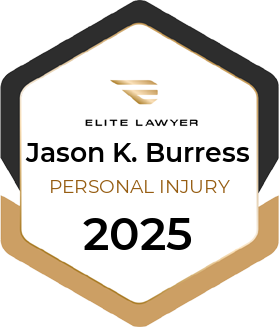Recent Blog Posts
Navigating a Personal Injury Claim Following a Car Crash
Anyone who has experienced the unfortunate event of being involved in a car wreck knows firsthand just how stressful the aftermath can be. Regardless of who caused the collision, or how minor or major the damage, navigating the insurance claim process, tending to any injuries, and dealing with vehicle damage can be downright overwhelming.
Who Is at Fault?
Following an auto accident, many questions arise as you begin the process of assessing the damage, exchanging insurance information, filing a claim, and reporting injuries. One of the first concerns is typically who will pay for repairs and any medical bills that are incurred. While your insurance company or your insurance agent might be capable of explaining your policy, it will do very little good if you do not understand your rights or what that policy means in the first place. It is important to determine who is at fault and who is responsible for what expenses.
Although auto insurance policies vary greatly in terms of coverage, Texas has certain laws that stand across the board, regardless of what insurance carrier you work with and what coverage you have. For example, the “comparative negligence” law in Texas states that more than one person can be considered at fault for a car accident. If you are fifty percent or less at fault for the accident, you are eligible to collect damages. In general, each driver's insurance company will investigate the claims in an effort to determine which driver or drivers should be held responsible for any injuries or damages.
Can Alcohol-Selling Establishments Share Liability for Drunk Driving Accident Injuries?
Being injured in an automobile accident can be devastating and traumatic. In some cases, the accident may have been unpreventable, such as those caused by an act of nature, or poor weather conditions. In many cases, however, one or more individuals are at fault in an accident. When the crash involves a charge of driving while intoxicated (DWI), fault for the accident generally rests with the intoxicated individual.
But, what about when there is an establishment involved — one that overserved alcohol to the at-fault driver? Should the establishment be held accountable as well? And if so, to what extent?
“Dram Shop Laws” and Alcohol-Selling Establishments in Texas
Many states, including Texas, have “dram shop laws” that govern lawsuits over injuries caused by people who drank at a bar, restaurant, pub, or any other establishment with a license to sell alcohol. Essentially, these laws hold such establishments liable for selling alcohol to individuals who appear to already be intoxicated at the time of sale. It also applies to the selling of alcohol to minors.
March is Brain Injury Awareness Month
According to various studies and research compiled by the Centers for Disease Control and Prevention (CDC), traumatic brain injuries (TBI) have reached epidemic proportions. The CDC reports that more than 50,000 people die every year from causes associated with TBI. Almost 2.2 million people annually are treated at emergency rooms for an injury to their brain, and approximately 280,000 people end up hospitalized because of serious brain injuries.
These numbers do not include people who suffer concussions or other head injuries but do not seek treatment. If all those victims were included, then the CDC puts the number of people in this country who suffer brain injuries every year at well over 3 million. In honor of March as National Brain Injury Awareness month, let us take a look at some of the details associated with traumatic brain injuries.
A Serious and Complex Problem
A traumatic brain injury is defined as a disruption in the brain's normal function that can be caused by a blow, jolt, or bump to the head or by a penetrating head injury. People of all ages are at risk for TBIs, but older adults and young children are especially vulnerable.
Do I Really Need a Personal Injury Attorney for My Car Accident Claim?
In the state of Texas, drivers are required to carry auto insurance. This is meant to ensure that they and other road users are protected, should an accident occur. Yet the type of protection they expect, and the kind they receive are sometimes worlds apart. Can an auto accident attorney really help, and if so, to what extent? Are there any other potential benefits to hiring one for your case? The following information provides answers to these common questions and explains how you can find the right attorney for your case.
How a Personal Injury Attorney Can Improve Your Chances of Success
Many drivers are surprised to learn that their insurance company does not just pay out compensation for an accident. Instead, representatives from the insurer will investigate the details of the accident to determine whether they can claim you may have been partially (or completely) at fault. We have had many cases where the insurance company's insured runs a red light and yet the adjuster attempts to partially blame our client for not seeing the offender and driving more defensively.
What to Do After a Truck Accident in Texas
Getting into an accident on the road is a common fear for drivers. Sharing the road with a semi-trailer truck can make drivers especially nervous. Commercial trucks are large and intimidating, even at a distance. Most truck drivers are responsible on the road, but poor judgment (such as driving while fatigued or under the influence of alcohol or drugs) and other human error, not to mention mechanical problems, often lead to deadly truck accidents.
Burress Injury Law has a wealth of experience with 18-wheeler Crashes
The attorneys at Burress Injury Law have handled hundreds of 18-wheeler and other commercial vehicle wrecks and have recovered more than 100 million dollars for our clients in the past decade. One such 18-wheeler collision involved a truck driver who purposely ingested synthetic marijuana before driving a loaded 80,000 lb. 18-wheeler and causing a multi-fatality wreck. That case settled for a total of $16,500,000.
How Common Are Truck Accidents?
Additional Issues Experienced by Spinal Cord Injury Victims
Data from the National Spinal Court Injury Statistical Center shows that nearly 40 percent of all spinal injuries are caused by motor vehicle accidents. That makes car crashes the leading cause of this debilitating condition. Paralysis is not the only issue that victims face, however. In fact, there are several other common complications that are often associated with spinal cord injuries. The following examines these additional issues and provides details on how you may be able to receive compensation for the injuries to you or a loved one.
Looking at the Additional Complications
Many of the additional complications experienced by spinal cord injury victims stem from or are caused by the limited body function or paralysis often associated with such an injury. For example, pressure sores (decubitus ulcers) are extremely common among victims who cannot change positions in a bed or chair easily. Pneumonia and blood clots are also exceedingly common, and can sometimes lead to fatalities. Sepsis from any one of these complications is also a possibility, and it can be highly fatal for patients with spinal injuries. In fact, life expectancy can easily be cut short because of all the additional complications spinal cord injury victims face.
Staying Safe in Bad Weather When You are Riding a Motorcycle or Bike
One of the nice things about owning a motorcycle or a bicycle is the fact that you are never really dependent on public transit, even when the weather is bad. That fact alone can motivate people to keep on biking, no matter what the weather conditions are like.
During the wet, early spring months, you may not want to hang up your bicycle or tuck your motorcycle into storage, but you do need to take some additional safety precautions while you are on the road.
Why do these safety rules apply to both modes of transportation?
Bicycles and motorcycles may be vastly different in many ways, but they do share a few common factors. Among the most significant: Both bikers and cyclists are very vulnerable to serious injuries. Neither have even the limited protection that a vehicle's sides, roof, seatbelt and airbags offer in a wreck.
You need to do everything in your power to avoid accidents, and early spring weather can prove especially challenging. Here are some precautions you can take to protect yourself:
Car Crashes by the Numbers: Statistics and Facts That Should Scare You
There are about 225 million licensed drivers in the United States these days. Texas just happens to be home to more than 17 million of them. While many drivers get through their daily commutes and errands without incident, motor vehicle accidents are one of the top causes of death in the United States every year among otherwise healthy adults.
Ultimately, assuming that figures will stay relatively unchanged from the past few years, you can expect around 40,000 fatal car accidents to occur in 2020. However, that's only the start of the damage. Another two million victims end up with permanent injuries from mostly avoidable wrecks.
What Are Your Chances of Being in a Car Wreck?
Here is a rough breakdown of who is getting hurt in car accidents these days, and why:
Even though female drivers now slightly outnumber male drivers in the United States, 80% of car accidents will involve male drivers. Men do drive about 30% more miles than women, but that does not fully account for the disparity.
FDA Gives Doctors New Diagnostic Tools for Concussions
Traumatic brain injuries (TBIs), or concussions, are among the most catastrophic — and the most common — types of injuries that a motor vehicle crash (or other accident victim) can suffer. TBI victims stand the best chance of having a good recovery from their injuries when they are quickly and accurately diagnosed and undergo treatment for their TBI early on.
However, TBIs can be frustratingly hard to diagnose after an accident because the majority of the damage remains hidden inside the victim's skull. Plus, bleeding and swelling in the brain, or axonal shearing can continue long after the initial impact, eventually causing additional brain trauma that can actually be worse than the initial injury.
Hidden Damage
However, bruising and torn nerve fibers in the brain cannot usually be seen on CT scans or basic MRI's. Although more sophisticated imaging techniques (e.g. Diffusion Tensor Imaging MRI, Susceptibility Weighted Imaging, SPECT, etc.) are much better at detecting microscopic injury to axon nerve fibers which often lead to many of the long-term problems suffered by TBI victims, other diagnostic methods traditionally used to assess brain injuries are essentially subjective tests that measure cognitive abilities. These tests can be particularly impractical when someone is brought into an emergency room after a TBI because they rely on the examiner being able to recognize a victim's baseline abilities prior to the injury — something that an ER physician cannot really do. Frankly, it is also impractical when used on people who are highly motivated to hide their injuries — like athletes and soldiers. They simply learn to spit out the "correct" answers so they can get back out with their team or unit.
18 Wheeler Result
Burress Injury Law had the honor of helping a young man who was the victim of a hit-and-run 18-wheeler crash on Sam Rayburn Tollway (121). Our client was driving in the left lane on 121 when without warning, the 18-wheeler driver dangerously cut across 2 lanes of traffic and struck the right side of our client's vehicle. The impact caused our client's vehicle to rotate clockwise, pass in front of the 18-wheeler and across the center and right lanes of the tollway and eventually strike a concrete bridge support pillar head on. Our client catastrophic injuries and could not call 911. Meanwhile, the truck driver fled the scene without rendering aid and no eye-witnesses came forward to identify the driver.
We were fortunate that the client's family retained Burress Injury Law very quickly. Our team sprang into action, obtaining NTTA videos of the crash, and located and inspected the tractor-trailer within days. Inexplicably, the trucking company chose to employ a driver who DID NOT have a Class A driver's License (qualifier to driving the 80,000 lb. tractor/trailer) and moreover, his normal Class C driver's license was suspended for two separate reasons. The truck driver was charged with multiple crimes including a Felony for "Failure to Stop and Render Aid Resulting in Serious Bodily Injury."




















 ON
ON
